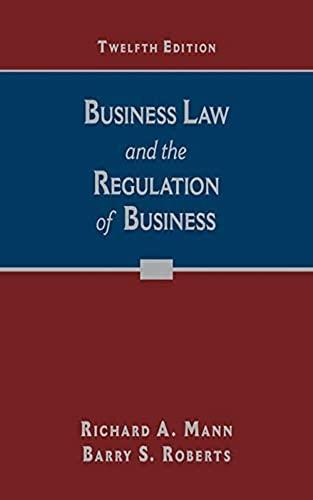Almega Corporation, organized under the laws of State S, has outstanding twenty thousand shares of ($100) par
Question:
Almega Corporation, organized under the laws of State S, has outstanding twenty thousand shares of \($100\) par value nonvoting preferred stock calling for noncumulative dividends of \($5.00\) per year; ten thousand shares of voting preferred stock of \($50.00\) par value, calling for cumulative dividends of \($2.50\) per year; and ten thousand shares of no par common stock. State S has adopted the earned surplus test for all distributions. As of the end of 2011, the corporation had no earned surplus. In 2012, the corporation had net earnings of \($170,000;\) in 2013, \($135,000;\) in 2014, \($60,000;\) in 2015, \($210,000;\) and in 2016, \($120,000.\) The board of directors passed over all dividends during the four years from 2012 to 2015, as the company needed working capital for expansion purposes.
In 2016, however, the directors declared a dividend of \($5.00\) per share on the noncumulative preferred shares, a dividend of \($12.50\) per share on the cumulative preferred shares, and a dividend of \($30.00\) per share on the common stock. The board submitted its declaration to the voting shareholders, and they ratified it. Before the dividends were paid, Payne, the record holder of five hundred shares of the noncumulative preferred stock, brought an appropriate action to restrain any payment to the cumulative preferred or common shareholders until the company paid a full dividend for the period from 2012 to 2016. Decision? What is the maximum lawful dividend that may be paid to the owner of each share of common stock?
Step by Step Answer:

Business Law And The Regulation Of Business
ISBN: 9781305509559
12th Edition
Authors: Richard A. Mann, Barry S. Roberts





